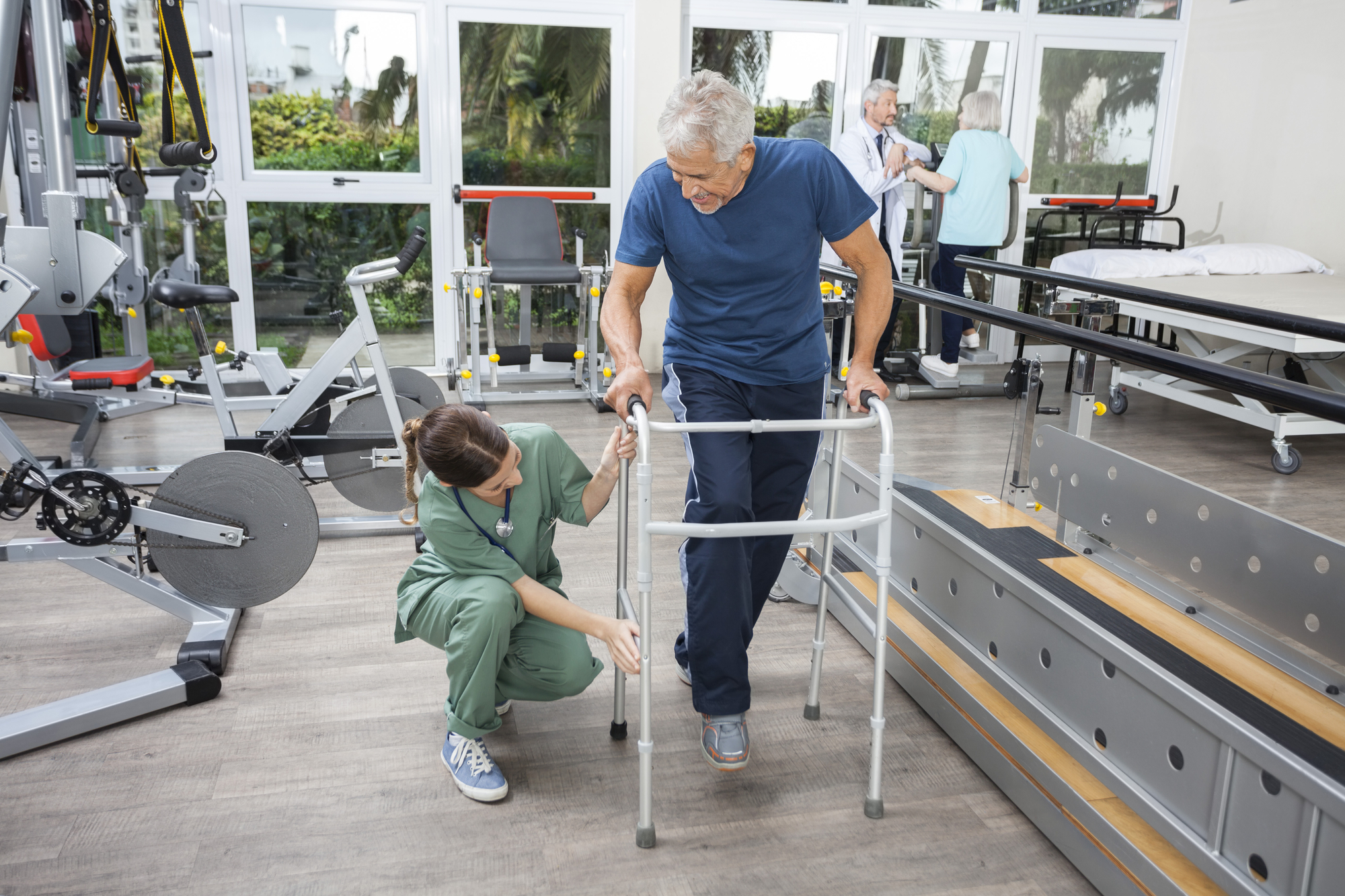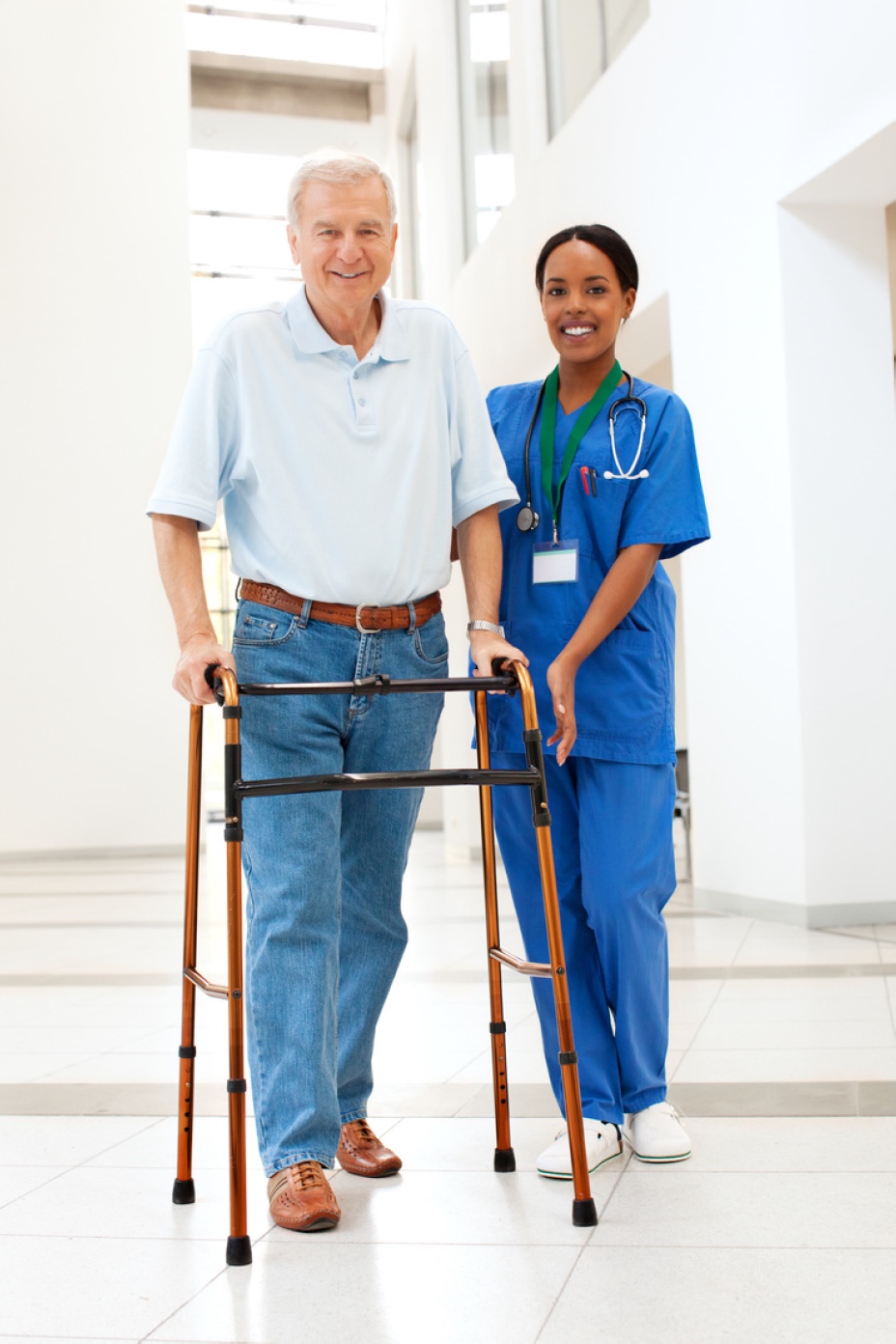
Congratulations on taking the step toward improved joint health and mobility through joint replacement surgery!
While the surgical procedure itself is a significant milestone, the real journey to regaining full function and living pain free begins during the recovery and rehabilitation phase. In this patient guide, we’ll provide you with essential information, tips, and advice to ensure a successful and smooth recovery after joint replacement surgery.
10 Tips for Joint Replacement Recovery
1. Post-Surgery Length of Stay
In many cases, total joint replacement surgery is scheduled as an outpatient procedure, and you will be able to go home on the same day of surgery. If you do require a hospital stay, it is only for a short period of time and is usually followed by admission to a rehabilitation facility, pending insurance approval if you require extra assistance.
2. Pain Management
Pain management is a crucial aspect of your recovery. Your healthcare team will prescribe pain medications to keep you comfortable. It’s essential to only take these medications if needed, and as directed and communicate any changes in your pain level to your healthcare provider. Narcotic pain medicines are not usually needed after two weeks from surgery.
3. Rehabilitation and Physical Therapy
Physical therapy plays a central role in your recovery and postoperative outcomes. Be sure to have appointments ready to meet with your physical therapist shortly after surgery. Your therapist will create a personalized exercise program to:
- Improve joint mobility and flexibility.
- Strengthen the muscles surrounding the joint to enhance stability.
- Promote a gradual return to weight-bearing activities.
Regular physical therapy sessions are essential to your progress, and it’s vital to actively participate in them.
4. Home Exercises and Self-Care
In addition to your formal physical therapy sessions, your therapist will provide you with a set of exercises to do at home. These exercises are crucial for maintaining your joint’s range of motion and strengthening the supporting muscles. Consistency is key; do your home exercises as instructed.
5. Mobility Aids
You may need mobility aids like a walker, or a cane during the early stages of recovery. Your physical therapist will teach you how to use these devices safely.
6. Wound Care and Infection Prevention
Proper wound care is essential. Keep your surgical site clean and dry as instructed by your surgeon. Watch for signs of infection, such as redness, swelling, or discharge, and report them immediately.
7. Diet and Nutrition
A balanced diet rich in essential nutrients is essential for healing. Ensure you consume enough protein, vitamins, and minerals to support tissue repair. Consult your healthcare provider or a registered dietitian for dietary guidance.
8. Pain and Swelling Management
To manage pain and swelling, you can:
- Use ice packs or ice machines as recommended by your healthcare team.
- Elevate the operated limb when sitting or lying down.
- Follow your prescribed medications, including anti-inflammatories.
9. Gradual Return to Activity
Follow your surgeon’s guidelines for gradually increasing your activity level. Avoid high-impact activities initially and focus on low-impact exercises to prevent injury.
10. Be Patient and Stay Positive
Recovery after joint replacement surgery is a gradual process. It’s normal to experience some discomfort and challenges along the way. Stay patient, adhere to your rehabilitation plan, and maintain a positive mindset. Celebrate your progress, no matter how small it may seem.
Conclusion
Recovery and rehabilitation after joint replacement surgery require commitment and dedication, but the rewards are immense. By following your healthcare team’s guidance, actively participating in physical therapy, and practicing self-care, you can look forward to regaining mobility, reducing pain, and enjoying a more active and fulfilling life with your new joint. Remember that your medical team is there to support you throughout this journey, so don’t hesitate to ask questions or seek assistance when needed. With determination and patience, you’ll be well on your way to a successful recovery.




